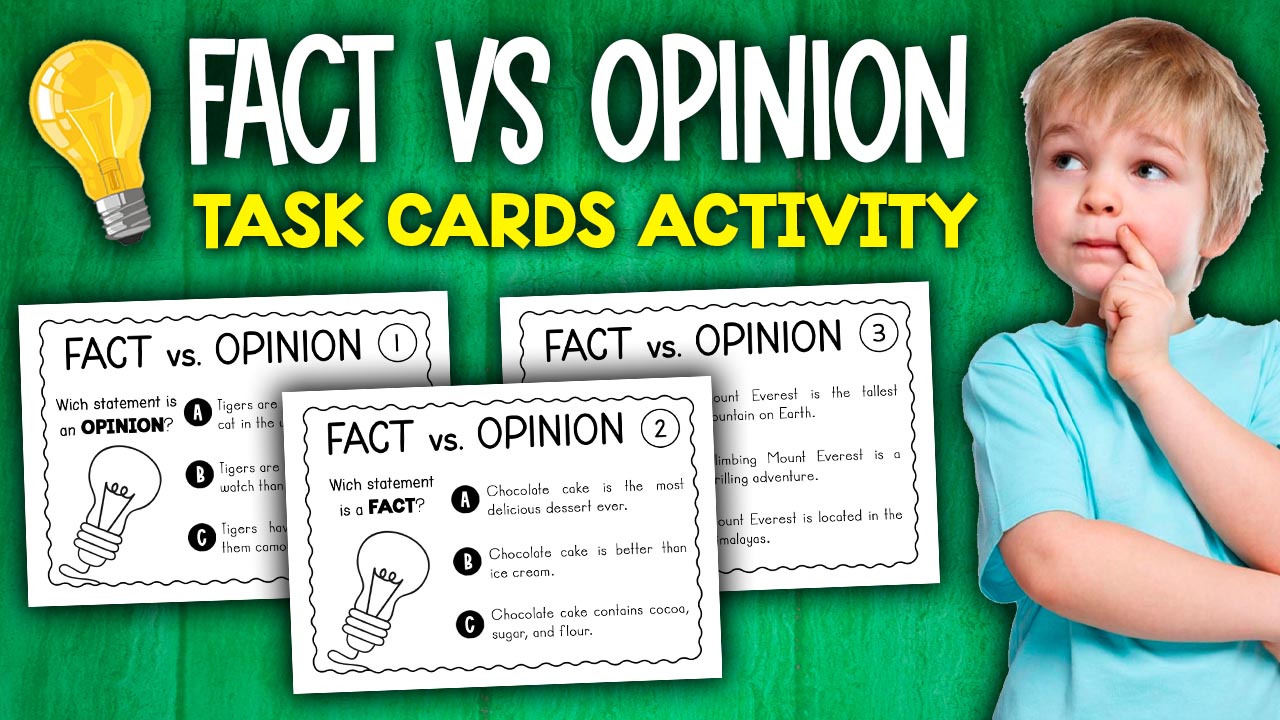Some of my students will believe anything they read, especially if it sounds exciting. “Dogs are the best animals ever!” one of them read aloud the other day, then proudly announced, “See? It’s true!” That moment reminded me how important it is to teach the difference between facts and opinions, and why I keep this Fact vs. Opinion Task Card Set close by.

What is the resource?
This is a set of 32 task cards that focus on identifying facts and opinions in a fun, manageable way. Each card presents three related sentences. Depending on the card, students are asked to pick either the fact or the opinion. The variety of topics—like animals, food, holidays, and famous people—keeps things fresh and engaging, even for reluctant readers.
You’ll also get:
- A printable student answer sheet
- An answer key (a huge time-saver!)
- A digital version of the 32 task cards, which is great for Google Classroom or other platforms
How does it work?
You can use these task cards in several ways:
- Literacy centers: Set up a station where students can rotate through and complete a few cards at a time.
- Partner work: Pair students up to discuss their choices and explain their thinking.
- Small groups: Use them in guided reading groups to build discussion around comprehension.
- Whole-class games: These work perfectly for a round of Scoot or even a quiz-style review session.
I like to mix it up. Some days, I project a card on the board and we vote as a class. Other days, I let fast finishers grab a few cards and work through them independently.
What skills are we building?
Besides reinforcing the difference between fact and opinion, this resource helps students:
- Develop critical thinking by analyzing sentence meaning
- Improve reading comprehension
- Practice close reading and paying attention to wording
I’ve noticed that once students start to get the hang of this skill, they apply it more naturally to their writing and even discussions. One of my third graders recently said, “Well, that’s just your opinion,” during a class debate—and I couldn’t help but smile.
Tips for classroom use
- Visual learners? Try color-coding answers or underlining clue words together as a group.
- Younger learners? Start with just a few cards and read them aloud together. You can simplify the task by asking “Does this sentence tell us something that can be proven?”
- Need to differentiate? Have students explain why they think a sentence is a fact or opinion in their notebooks. It adds an extra layer of thinking for those who need a challenge.
Could this be a good fit for your literacy block? Whether you’re reviewing the skill or introducing it for the first time, this low-prep activity makes it easy to weave into your weekly plans. Let me know how you use it in your classroom—I’d love to hear what works best for your students!




Leave A Comment